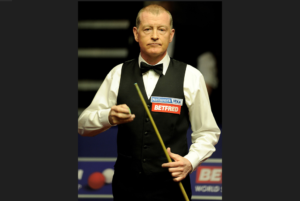In the world of sports, burnout is a common issue that athletes face. Many clients exhibit the classic symptoms of burnout, such as lack of motivation, fatigue, disrupted sleep patterns, and the perception of declining performance. They may feel under pressure, fear failure, and become contemptuous of others. They may also become irritable and moody, responding aggressively to those who are there to support them.

Famous sports personalities, such as Steve Davies in snooker, have gone through periods of burnout. What was once a source of joy and achievement becomes a chore, and training becomes a grind. The "What's it all about? Is it worth it?" attitude becomes predominant. The pressure from sponsors, trainers, other athletes, and the media can all contribute to this feeling.
Even amateur athletes can experience burnout. They may feel overwhelmed by the demands of their sport, which require more and more time and energy, on top of the usual demands of work and relationships. They may feel alone in their struggles, thinking that others do not understand and demand too much of them.
Good sports performance requires dedication and enthusiasm, but prolonged pressure and stress can lead to burnout. Many of the symptoms are common to all those suffering from stress, and the skills used to help stressed clients can be applied to athletes.
One effective technique is to focus on the positive aspects of the athlete's performance. Changing the perception of poor performance can help to regain motivation and positive feelings about oneself. Visualization and reliving past events can help to identify areas of success and techniques that may need improvement. Once a list of things that went well has been established, the athlete can focus on areas that need attention.
By going back to a time when they had enthusiasm and exhilaration, athletes can recapture those feelings and use them to support them in future events. The suggestion that they will feel exactly as they did back then can help them to enjoy those feelings and perform better in the future. With the right techniques and support, burnout can be overcome, and athletes can rediscover the joy and satisfaction of their sport.
Balance of life
Balance of Life Exercise –
People need to be reassured that this is strictly confidential –
Ask them to give a score out of a ten when –
10 = Couldn’t improve in any way
7 or above = Good
6 to 4 = OK but could do better
3 or 2 = Poor in need of a rethink and real attention
Less than 2 = Needs urgent attention – NOW!
To each of the following areas of life:
Sports Activity Leisure Activities Social Life Emotional Life Sex Life Work Life
This exercise can reveal areas of stress that may be affecting the individual's sporting performance, and it can open up new areas for discussion. You will find the stress resource helpful,
I have also used The Power of Emotional Agility - How to Shift Your State at Will exercise to great effect
In addition to these exercises, goal-setting exercises can also be helpful. By utilizing end-point visualization and other techniques, such as Changing A Negative To A Positive -The Magical Library Of Your Mind Metaphor, individuals can adjust their goals to a more realistic level in terms of possibility and time scale. This can help them to avoid feeling overwhelmed and burned out, and can contribute to a better overall balance in their life.
Case Study
I had the opportunity to work with a volleyball player named Sarah who had been struggling with burnout. She had been playing volleyball for years, but recently she had been feeling exhausted and uninspired. She had lost her passion for the game and was struggling to find the energy to keep going.
I began by asking Sarah to visualize where she wanted to be at the end of the season. She imagined herself leading her team and feeling proud of herself for all the hard work she had put in. Next, I helped Sarah break down her end goal into smaller, more achievable milestones. We set targets for her to hit each week, such as increasing her time in the gym or improving her serving accuracy. I also used The Power of Emotional Agility and Changing A Negative To A Positive The Magical Library Of Your Mind Metaphor Techniques
As Sarah began to hit her targets and see progress, her motivation started to return. I helped her celebrate her progress and stay focused on her end goal. I also worked with Sarah to develop strategies for managing her workload and preventing future burnout.
With my help, Sarah was able to regain her passion for volleyball and lead her team. She credited her success to the techniques I had taught her and the support I provided.
